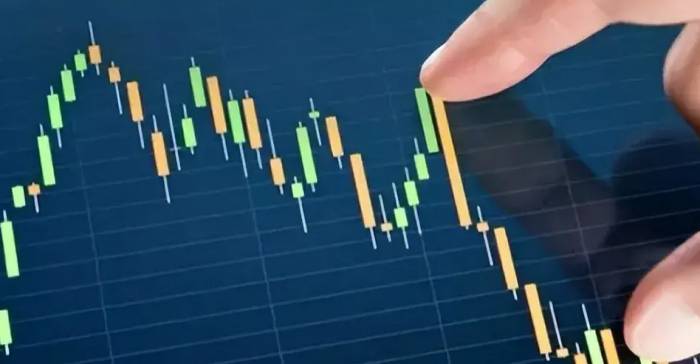There is a saying that trends die in the midst of fluctuations. Many excellent traders have fallen in the dark before the dawn of a major trend, due to their lack of precise grasp and recognition of fluctuating markets, which is a cause for regret and sighing!
In the speculative market, trend trading should be the soul and core of trading operation philosophy; by aligning with the major trends, trading becomes simpler and more profitable. However, market trends often carry uncertainties. Under certain conditions, market trends can shift from order to chaos, from chaos to order, or from one form of order to another, leading to a sudden change in state. But in most cases, it usually operates in an intermediate state between order and disorder, a state of ambiguity. This ambiguous intermediate state that frequently appears and exists in the market is what we refer to as a fluctuating market. So, how can we determine whether the current market is a fluctuating market or a trend market? Today, let's talk about how to judge whether it's a "trend or fluctuation."
Classification and characteristics of fluctuating markets:
In fact, a fluctuating market is a pause in the trend. It is the counterpart to the trend market, also known as the continuation pattern, consolidation pattern, or consolidation market. Based on the duration of its adjustment, it can be divided into short-term fluctuations, medium-term fluctuations, and long-term fluctuations.
According to their shape, they can be classified into common patterns such as triangles, rectangles, wedges, flags, funnels, and diamonds.
Advertisement
Characteristics of fluctuating markets:
1. Prices typically operate within a specific range of support and resistance.
2. On the K-line chart, bearish and bullish candlesticks alternately appear.
3. Trading volume exhibits irregular expansion and contraction.4. The moving averages tend to flatten and are intricately entangled;
5. Compared to the position size, the trading volume shows a gradual shrinking characteristic.
Strategies in a Volatile Market
Once we understand the principle of the volatile trend and distinguish different volatile patterns, how can we achieve stable profits in a volatile market? The primary premise is: traders must understand the comparison of market forces and must know whether the market is operating in a trend or in a consolidation state.
The market usually spends about 80% of its time operating within a certain trading range, where long-term bulls and bears are reactive groups. When a market is in a consolidation operation, the price movement is fierce, but there is no real long-term direction, just back and forth fluctuations.
If you miss an opportunity to buy at the bottom of the consolidation range or sell at the top, don't worry about the opportunity being gone and rush to enter the market. It is not easy to chase rises and kills in the consolidation range. History has repeatedly proven that the market will probe the consolidation boundaries an average of 3 to 5 times before an effective breakthrough occurs.
Moreover, a market usually does not move regularly from one end to the other, and its price will randomly fluctuate and wander within that balance area, making the profits and losses of the trend-following positions as uncertain as a candle in the wind!
1. Strategy for a wide-range volatile market: For medium and long-term traders, it is best to be empty and wait and see; for short-term traders, they can either sell high and buy low along the support and pressure lines, or only trade in the ultra-short-term intraday market.2. Strategies for a Narrow Trading Range Market: Either stay in cash and wait and see, or only engage in intraday ultra-short-term operations. Additionally, it is worth mentioning that at the end of a narrow trading range market, the main force often uses a deviation to mark the end of the oscillation, and then launches a strong trend!
Trends are constantly changing and transforming, and chaos and order are engaged in a long-term marathon-like game. When we have distinguished the oscillating market, effectively utilized the oscillating trend, and steadily won profits in the oscillating trend, we must not be complacent, because the trend may change when we are full of confidence. So, how to distinguish the end of the oscillating market?
Signals and Signs of the End of the Oscillating Market
When the price approaches the edge of the consolidation range, it is easy to lose objectivity and start to expect that the market will break through this consolidation range. However, it is very dangerous to predict and open positions before the market shows a price breakthrough.

If you are wrong, you are very wrong. Remember, traders need to have the patience to observe whether the price makes an effective breakthrough.
Breakthroughs are the beginning of all trends and the start of all effective trading! Breakthroughs are the first key point of professional market watching! Throughout the history of speculation, all great traders have a deep understanding and focus on "breakthroughs," and are given high weight by most practitioners, repeatedly and classically applied in actual combat operations!
A successful trader never makes subjective judgments about the market, not "hoping" how the market will go, but follows the guidance of the trend to make trend-following operations.
Comment